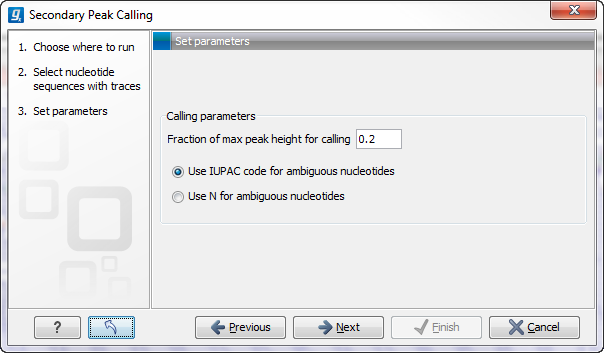Secondary peak calling
CLC Main Workbench is able to detect secondary peaks - a peak within a peak - to help discover heterozygous mutations. Looking at the height of the peak below the top peak, the CLC Main Workbench considers all positions in a sequence, and if a peak is higher than the threshold set by the user, it will be "called".
The peak detection investigates any secondary high peaks in the same interval as the already called peaks. The peaks must have a peak shape in order to be considered (i.e. a fading signal from the previous peak will be ignored).
Regions that are trimmed (i.e. covered by trim annotations) are ignored in the analysis (Trimming).
When a secondary peak is called, the residue is change to an ambiguity character to reflect that two bases are possible at this position, and optionally an annotation is added at this position.
To call secondary peaks:
select sequence(s) | Toolbox in the Menu Bar |
Sequencing Data Analysis (![]() )| Call
Secondary Peaks (
)| Call
Secondary Peaks (![]() )
)
This opens a dialog where you can add the sequences to be analyzed.
When the sequences are selected, click Next.
This opens the dialog displayed in figure 18.27.

Figure 18.27: Setting parameters secondary peak calling.
The following parameters can be adjusted in the dialog:
- Fraction of max peak height for calling. Adjust this value to specify how high the secondary peak must be to be called.
- Use IUPAC code / N for ambiguous nucleotides. When a secondary peak is called, the residue at this position can either be replaced by an N or by a ambiguity character based on the IUPAC codes (see the Appendix).
Clicking Next allows you to add annotations. In addition to changing the actual sequence, annotations can be added for each base that has been called. The annotations hold information about the fraction of the max peak height.
Click Next if you wish to adjust how to handle the results. If not, click Finish. This will start the secondary peak calling. A detailed history entry will be added tothe history specifying all the changes made to the sequence.
